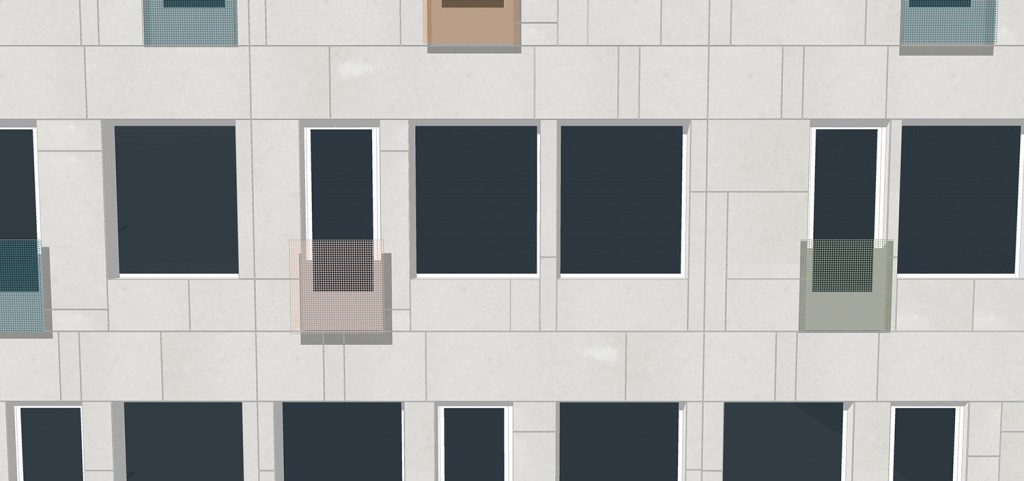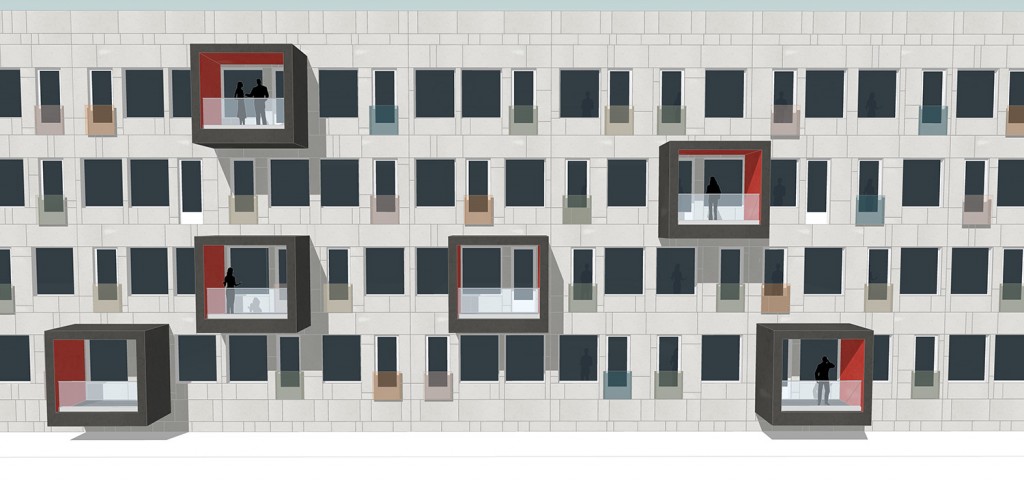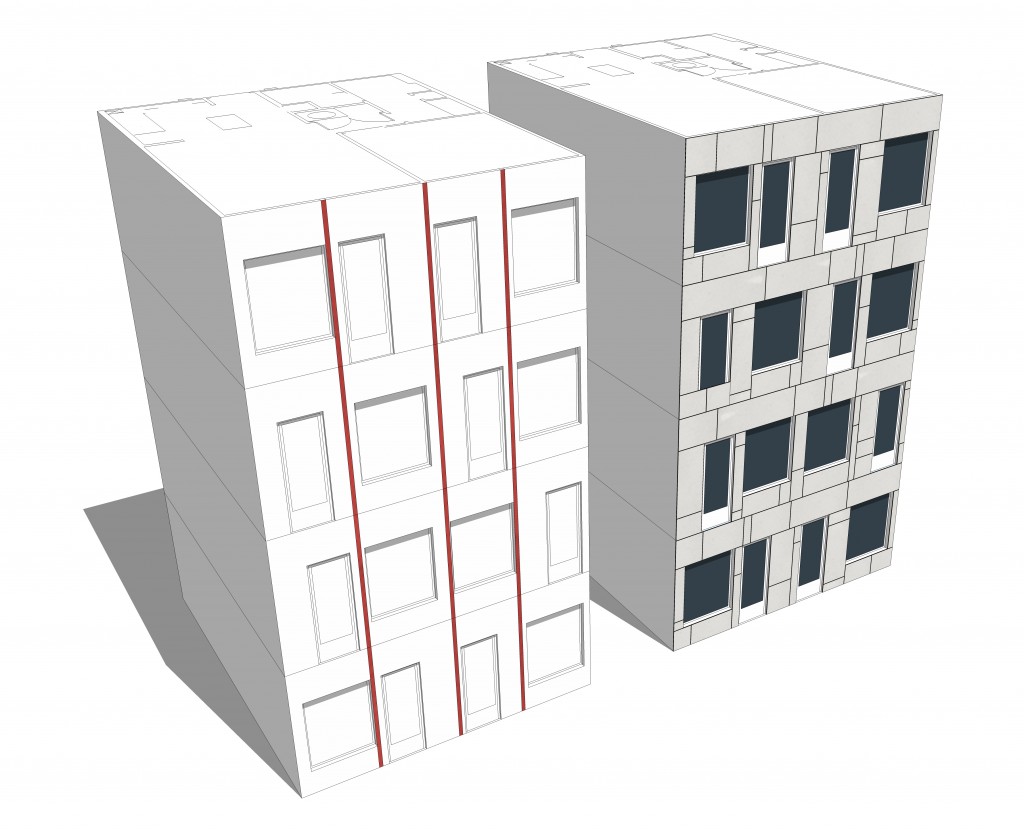Architecture in the Real World
Architecture in the real world…is the only ‘architecture’.
Period.
With the title of this entry a reader might make the assumption that I’d write on the nuts and bolts aspects of the profession, what an office is like, how the process really works, and maybe even a litany of advice for the emerging professional. It’s not. Architecture in the real world, professionally speaking, is more like any other office experience than not. Now on to something more fun, and probably more controversial. Strap in.
If it ain’t built, it ain’t architecture.
This is a matter of some debate in the architectural community, as there is such a great and prolific body of work from architects of every level that has never, and will never be built. And we architects, all of us, have been immeasurably influenced by it. Personally the Plan Voisin urban re-design for the city of Paris by Le Corbusier, the Open House by Coop Himme(l)blau, and the brilliant works of Antonio Sant’elia who left us far too early, have all been fundamental to my design, and there are hundreds, if not thousands more just as dear to other architects.
But they are not architecture.
No, they are designs, philosophies, concepts, experiments…whatever you like, whichever moniker you prefer, but they are not architecture. Fundamental to architecture is the comprehensive process. The architect designs it, that design must be sold to a client, that client must find the means to pay for it, the architect must document it, the design must receive a permit, the contractor must build it. and finally, the building must be occupied successfully in the use it was designed for. Each step in this process is incredible, complex and rife with obstacles. And unbuilt works often don’t get past the first step.
I’ll use one of my own designs to personify this. Our firm is contributing to a local mixed-use project centered around multiple corporate headquarters and seeks to successfully integrate urban residential within a very retail-centric commercial fabric. Early in the design process we identified several elements that the clients (there is a partnership of entities involved) sought and devised what we though was a very considerate and effective solution. I won’t go into all the details, but here are a few salient points.
1. Stucco is getting as expensive as brick, crews are hard to find, and when installed poorly looks cheap. Find a alternate material that is less expensive, easy to access and install, and looks more commercial.
2. Residential buildings tend to have a ‘residential’ look, how can we make them look more commercial knowing it isn’t in the budget to just use curtain wall. The design must consist of residential windows and doors, with some sort of operable glazing in each room.
3. Structurally this is wood framed, and as such works better if structural loads carry straight down through the building.
To try and solve this program, we came up with a design that used cementitious panels in an irregular pattern on a modular facade consisting of one door type and one window type. That irregular pattern shifted with the door & window placement (in which we used doors in all the rooms so that would be the operable piece, helping eliminate the horizontal mullion so characteristic of residential dwellings) in a way that always kept the amount of material waste below 3%, with 3 different facade configurations per unit.
This allowed us to generate an iterative facade that breaks down the typical window/door/window/door rhythm you see on most residential structures and implement a more organic facade treatment with a minimum of waste and cost.
Finally, we implemented the iterations to fit within a 6 foot structural grid (shown in red) so the bearing points could carry down through the whole facade uninterrupted.
Frankly we thought this was a very elegant solution that addressed all of these programmatic concerns. In the end, however, the clients didn’t embrace this design. There were several reasons why it did not, ultimately, become the end product, but in any event, it died after that first step. That’s not to say any of this design is a bad idea, in fact, I personally, possibly arrogantly, feel it was an excellent design. I’m very proud of it, but it’s not architecture.
Not unless it gets built.
If it doesn’t get built, that doesn’t mean it wasn’t a good idea. If it does get built, that doesn’t mean it was.
Is my design a good design that just didn’t get realized? Who knows. It’s may be a good design that couldn’t be realized for a lot of good reasons. My point here is not to disparage those designs that haven’t been fully realized, rather it’s to laud those that do. It is so incredibly, impossibly harder to get it not just designed and accepted by a client but to find, at the end of the construction process, it fulfills everyone’s vision.
Cheers.
______________________________________
This post is part of a coalition of architects posting on a single topic, each interpreting it in their own way. If you’d like to explore their thoughts on the same topic, I encourage you to follow this links below:
“Bob Borson – Life of An Architect
@bobborson
Architecture in the Real Wolrd … sorta“
⦿
“Matthew Stanfield – FiELD9: architecture
@FiELD9arch
Welcome to the Architecture of the Real“
⦿
“Marica McKeel – Studio MM
@ArchitectMM
Architecture in the Real World“
⦿
“Jeff Echols – Architect Of The Internet
@Jeff_Echols
What is the Real World: Architecture in the Real World“
⦿
“Lee Calisti, AIA – Think Architect
@LeeCalisti
Architecture in the Real World“
⦿
“Mark R. LePage – Entrepreneur Architect
@EntreArchitect
The HGTV Affect“
⦿
“Lora Teagarden – L² Design, LLC
@L2DesignLLC
Architecture: It’s a human thing“
⦿
“Nicholas Renard – dig Architecture
@dig-arch
Keep on Architect’n in the Real World“
⦿
“Andrew Hawkins, AIA – Hawkins Architecture, Inc.
@hawkinsarch
Here in the Real World“
⦿
“Jeremiah Russell, AIA – ROGUE Architecture
@rogue_architect
architecture in the real world: #architalks“
⦿
“Michele Grace Hottel – Michele Grace Hottel, Architect
@mghottel
Architecture in the Real World“
⦿
“Meghana Joshi – IRA Consultants, LLC
@MeghanaIRA
Architecture in the Real World“
⦿
“Michael Riscica – Young Architect
@YoungArchitxPDX
Architecture in the Real World“
⦿
“Stephen Ramos – BUILDINGS ARE COOL
@sramos_BAC
Architecture in the Real World“
⦿
“Brian Paletz – The Emerging Architect
@bpaletz
Architecture in the Real World“
⦿
“Tara Imani – Tara Imani Designs, LLC
@Parthenon1
Architecture in the Real World“
⦿
“Jonathan Brown – Proto-Architecture
@mondo_tiki_man
Architecture in the Real World“






